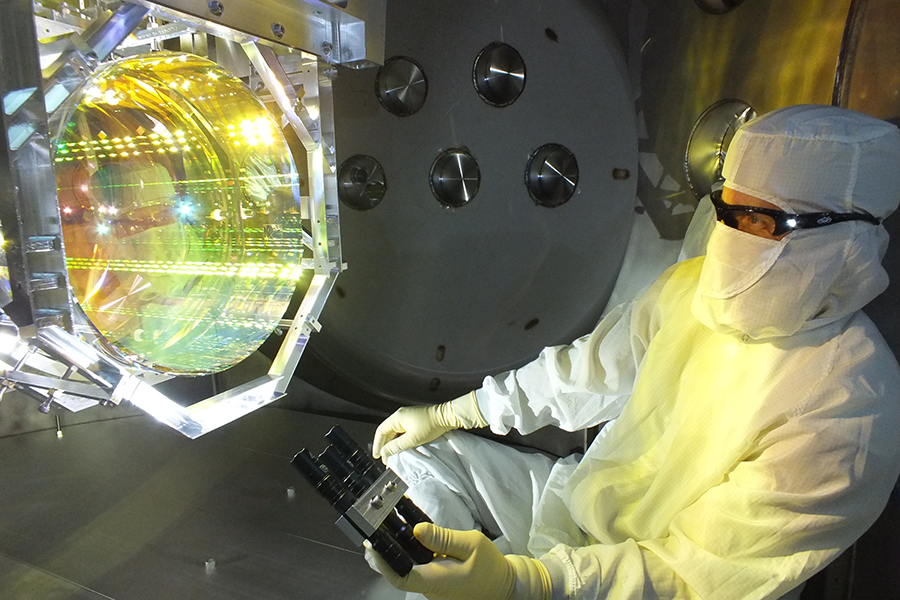Why all the buzz about gravitational waves?
Loading...
In a couple of days, the world likely will learn what some astrophysicists have been anxiously anticipating for months: that a pair of extraordinarily sensitive laser detectors confirmed the existence of gravitational waves first predicted a century ago by Albert Einstein in his general theory of relativity.
And, perhaps even more importantly, rumors based in part on an e-mail posted to Twitter from a Canadian physicist to his colleagues and students claim that researchers behind the Advanced Laser Interferometer Gravitational-Wave Observatory (LIGO) experiment, which has been looking for the ripples of gravity caused by violent explosions in far-off space, will announce Thursday that they’ve detected these waves emanating from two black holes on a collision course.
“This is just from talking to people who said they've seen the paper, but I've not seen the paper itself," Clifford Burgess, the author of the e-mail and theoretical physicist at McMaster University in Ontario, Canada, told Science magazine.
"I've been around a long time, so I've seen rumors come and go. This one seems more credible," said Dr. Burgess, who signed off on the e-mail to his colleagues with a “Woohoo! (I hope).”
Finding these undulations traveling through space at the speed of light, “will truly open a new window on the Universe,” say LIGO researchers.
Because they are produced by unobservable cataclysmic events, such as black holes colliding or stars exploding, that are too far away to detect with current technologies that look for sparks of light, they will help astrophysicists learn more about these phenomena.
“We are very confident that universe is filled with black holes and neutron stars, but since they don’t shine, we have no way to see them,” Marc Kamionkowski, a theoretical physicist at Johns Hopkins University in Baltimore tells The Christian Science Monitor.
Though astrophysicists already expect that almost every galaxy that we know of has a massive black hole at its center that is a million times the mass of the Sun, they have no idea where those come from, what gases circulate around them, how they form, and if they behave like general relativity says they should, explains Dr. Kamionkowski.
Being able to prove that they exist through the gravitational waves they generate will set scientists on a more direct path to understanding the universe in new ways.
“It's one thing to have a theory, it’s another thing to actually see it,” says Kamionkowski. “In some sense, this experiment is going to show us the money.”
LIGO’s super sensitive laser interferometers in Hanford, Wash., and Livingston, La. since September have been sensing invisible waves traveling in every direction through the fabric of spacetime.
If on Thursday it turns out that they truly did sense these waves coming from black holes, it will be a remarkable scientific achievement, since the detectors are looking for “unimaginably small movement,” as LIGO describes it.
Like the waves formed by an object tossed into a pond, the farther the gravitational waves travel from their source, the smaller the ripples become. By the time they reach Earth from as far as 225 million light years away, the spatial distortion caused by the wave is a billionth of the diameter of an atom, says LIGO.
[Editor's Note: This story has been updated to clarify the spatial distortion caused by the wave.]






